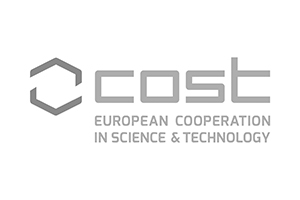
The main objective of the Action is to increase our knowledge and understanding of the properties of oxide surfaces and interfaces at an atomistic level and to develop the means of predicting and controlling their structures and functions at the nanometre scale.
In the long term this is expected to improve their use in various areas of advanced technologies ranging from: solar energy conversion to heterogeneous catalysis; from microelectronics to corrosion protection; from chemical sensors to bio-compatible structural materials, etc.
This COST Action is an important tool of scientific cooperation at the interface between different research areas, which will facilitate exchange of technical and scientific solutions between different domains and provide synergy of collaboration unattainable at a lower level of interaction between institutions involved. It will serve to fulfil an important challenge for Europe to develop a scientific network of competence in Inorganic Oxides Surfaces and Interfaces.
Secondary objectives
1) To learn on model systems how to control the surface morphology of an oxide surface so as to transfer this expertise to more applied areas.
2) To learn how to create and control desired concentrations of specific defects at oxide surfaces and interfaces in order to design the properties of systems and devices (defects engineering).
3) To develop and improve methods of growing and synthesising oxide materials in various forms with the desired level of purity.
4) To develop a series of novel experimental approaches and techniques as well as computational methods to unravel structural aspects of oxide surfaces and interfaces and correlate these with their electronic properties and chemical functions.
5) To span the entire area of oxide materials from thin and ultra-thin films to single crystals, from powders to porous structures, and to transfer knowledge among these domains.
6) To train young scientists in a strongly interdisciplinary field of research.
LEI activities in the Project
LEI plasma technology scientists in the new COST activity in the deposition of oxide coatings and in the process of forming dispersed inorganic oxide particles will seek to introduce atmospheric or reduced pressure plasma technology, which is simpler, cheaper and more efficient. For this purpose, it is planned to develop and realize the synthesis of high-quality various purpose coatings from various materials and their oxide containing dispersive and gaseous materials and mixtures. LEI scientists intend to conduct research in the fields of plasma generation, its properties, and the application of the resulting stream.
Coordinator: Università degli Studi di Milano, Italy
Project Team
| Name, surname | Office | phone. | |
|---|---|---|---|
|
LEI Representative |
|||
| Vitas Valinčius | 114-LK | +37037401896 | Vitas.Valincius@lei.lt |
|
Project Team |
|||
| Viktorija Grigaitienė | 113-LK | +37037401898 | Viktorija.Grigaitiene@lei.lt |
| Pranas Valatkevičius | |||
| Mindaugas Milieška | 109-LK | +37037401895 | Mindaugas.Milieska@lei.lt |
| Žydrūnas Kavaliauskas | 109-LK | +37037401895 | Zydrunas.Kavaliauskas@lei.lt |





